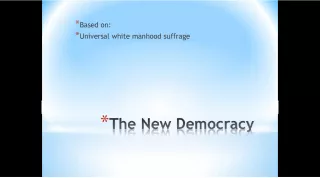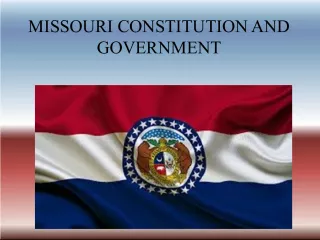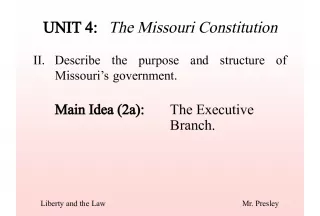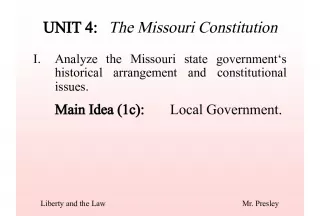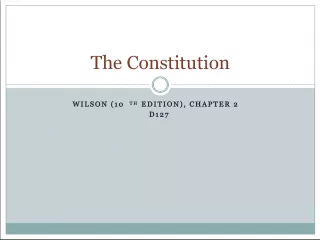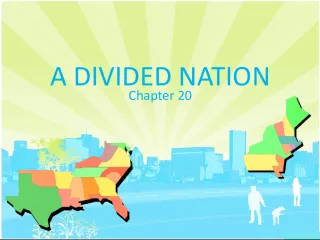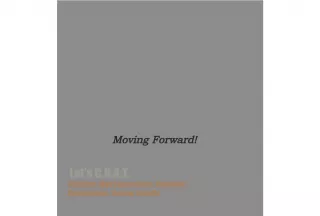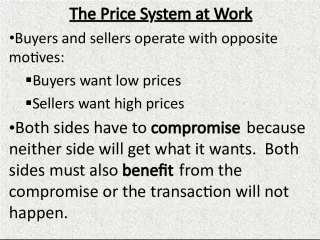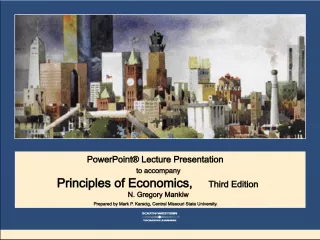The Missouri Compromise of 1820


In 1803, the United States purchased Louisiana, which raised the question of whether the new states created from the territory would allow slavery or be free states. When Missouri applied to become
- Uploaded on | 2 Views
-
 neeaerkkila
neeaerkkila
About The Missouri Compromise of 1820
PowerPoint presentation about 'The Missouri Compromise of 1820'. This presentation describes the topic on In 1803, the United States purchased Louisiana, which raised the question of whether the new states created from the territory would allow slavery or be free states. When Missouri applied to become. The key topics included in this slideshow are . Download this presentation absolutely free.
Presentation Transcript
Slide2The U.S. purchased Louisiana in 1803. Congress had to decide if states being made from this territory would be free or slave. Missouri applied to become a slave state. Maine wanted to come in as a free state. This would keep the balance between slave and free in Congress. To avoid future arguments, Henry Clay wrote a compromise that said that any territory that became a state would be slave or free depending on where it was on the map. Any territory below the 36x30 line on the map would be a slave state, any territory above that line would be a free state.
Slide4On the section MISSOURI COMPROMISE Write: Maine is admitted to the United States as a Free State Missouri is admitted to the United States as a Slave State Now 12 free and 12 slave Compromise draws an invisible line thru the U.S. at the 36x30 line=above the Arkansas territory. Every new state South of that line would be slave . Every new state North of that line would be free . Only Missouri would be above the line. To make the Southern states happy, Congress added that slaves that had escaped to the North could be brought back if they were caught- even from non-slave states.
Slide6Compromise of 1850 The annexation of Texas and the gaining of the Mexican Cession land made the U.S. re- examine the issue of slavery. They had to decide if new states would be slave or free. When California asked to become a free state in 1849 people began arguing. The 36x30 line cut right thru the middle of California.
Slide8Henry Clay came out of retirement to help write the Compromise of 1850 When it passed people believed this would finally solve the problem of what to do about slavery.
Slide9On the section COMPROMISE OF 1850 write:1. California would be admitted as a free state . 2. All other territories could decide when they applied for statehood if they wanted to be slave or free= Popular Sovereignty 3. The slave trade would be outlawed in D.C. 4. This compromise included the Fugitive Slave Act =it was now a CRIME to help runaway slaves even in the North. This made many people in the North very angry. 5. Texas agreed to give up its claims to New Mexico for $10 million. This let Texas pay off her debt and gave us our present day borders.
Slide10Kansas-Nebraska Act 1854 By the 1850s the area above Texas was ready to be recognized as a territory in preparation to becoming a state. It was North of the 36x30 line. The Compromise of 1850 had stated that these territories could decide for themselves if they were going to be free or slave. In 1854 Congress passed a bill creating 2 territories=Kansas and Nebraska. It was hoped by many that one would be free and one would be slave. However, the decision was left up to the people in those territories=Popular Sovereignty. People from surrounding states flooded into these territories to swing the vote the way they wanted it to go. Many people were killed over the issue.
Slide12On the section KANSAS-NEBRASKA ACT write:1. Nebraska was divided in half so there are 2 territories. 2. Kansas and Nebraska. 3. Slavery in each territory would be decided by the voters= Popular Sovereignty. 4. Results: 1. Bleeding Kansas -lots of violence 2. The Democratic Party lost support in the North but gained it in the South. Democrats were pro- slavery. 3. The Republican Part y is created and it gained power among those against slavery .
Slide13Dred Scott Decision 1857 Dred Scott was an African American slave who belonged to an Army officer. He traveled with his owner and lived in 2 free states for several years. At one point he even traveled alone through free territories to join his master in the South. He never sued for his freedom while his master was alive. However, shortly after the Army officer died, his widow hired Scott out to someone else. At this point, Scott tried to buy his freedom. He was denied.
Slide14Abolitionist lawyers took his case and helped him sue for his freedom on the grounds that he had lived in 2 free states and should have been given his freedom. His case was in the courts for 10 years. Some found in his favor, others found against him. He decided to appeal to the U.S. Supreme Court in 1856. Of the 9 Supreme Court justices 7 had been appointed by pro-slavery, Southern presidents and 5 were from slave holding families.
Slide15The Supreme Court ruled that because Scott was black he was not a citizen of the United States and therefore he had no right to sue. The justices also declared that the Missouri Compromise and its attempt to restrict slavery in territories North of the 36x30 line was unconstitutional. Northerners were furious and this decision had a huge impact on the 1860 election of the Republican nominee=Abraham Lincoln. The sons of the man who had owned Dred Scott had paid his legal fees for years trying to help him win his freedom. After the Supreme Court decision, they bought Scott and his wife from the widow and set him free. Scott died 9 months later a free man.
Slide17On the section DRED SCOTT DECISION write:1. The Supreme Court of 1857 ruled that people of African ancestry were not citizens and could not sue in Federal Court for freedom or anything else. 2. They also ruled that the Missouri Compromise was not legal. They stated the government can not tell states they have to be slave or free. 3. Results: 1. Angry anti-slavery voters voted for Abraham Lincoln for president in 1860.
Slide18Write in the section Presidential Election of1860 1860-Republican Abraham Lincoln won the Presidency. Republicans promised to: End the spread of slavery Impose tariffs to protect US businesses Give free land in the West to settlers
Slide19In the South: There were no votes for Lincoln-they feared he would end slavery Southern states started seceding-leaving the United States In Texas, Sam Houston and other Unionists urged Texans not to secede Unionist=Southerner who wanted to stay with the Union February 23, 1861-Texas secedes from the Union. They join other states to form the Confederate States of America=Confederacy Sam Houston is removed from the office of governor after he refuses to take the Oath of the Confederacy=promise to support and defend the Confederacy
